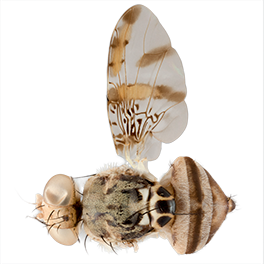Diagnosis
Morphological – adult
Head: Anterior pair of orbital setae not modified in any way.
Thorax: Scutellum marked black and yellow, with yellow lines or areas meeting margin, such that each apical scutellar seta is based in or adjacent to a yellow stripe; male mid-femora without stout ventral setae; mid-tibiae with rows of stout setae along the distal half of both the anterior and posterior edges giving a feathered appearance.
Wing length: 4-6 mm.
The males of most species of subgenus Pterandrus have rows of stout setae on both the anterior and posterior edges of each mid-tibia, giving a feathered appearance.
Ceratitis rosa can be separated from most other members of this subgenus by having this feathering confined to the distal half of the tibia and by lacking stout setae on the underside of the mid-femur. The males also lack the spatulate head appendages of subgenus Ceratitis.
Unfortunately, there is no simple method of recognizing females, except that Pterandrus species tend to have brown wing bands and a generally brown body colour, which contrasts with the yellow markings of C. capitata.
Morphological – larvae
Not available.
Molecular
DNA barcoding
BOLD reference data available, but not well resolved amongst a number of other species in BOLD.
Low divergence clades are apparent and when used in conjunction with other information about the specimen may be sufficient to make a confident identification
PCR-RFLP Test 1
BsrI: Does not cut
HinfI: 800, 200
HhaI: Does not cut
Sau3AI: Does not cut
SnaBI: Does not cut
SspI: 570, 480
Vspl: 600, 300
Approximate ITS1 fragment length – gel: 1020 bp
PCR-RFLP Test 2
Fully diagnostic restriction enzymes are DdeI, HinfI, RsaI, Sau3A, SspI and all other enzymes have some restriction value.
DdeI: 1500, 270, 220, 170
HinfI: 780, 410, 330, 280,150,120
RsaI: 410, 380, 310, 290, 260, 240, 130, 110
Sau3A: 1400, 770,110
SspI: 1000, 490, 300, 240, 150
Gallery
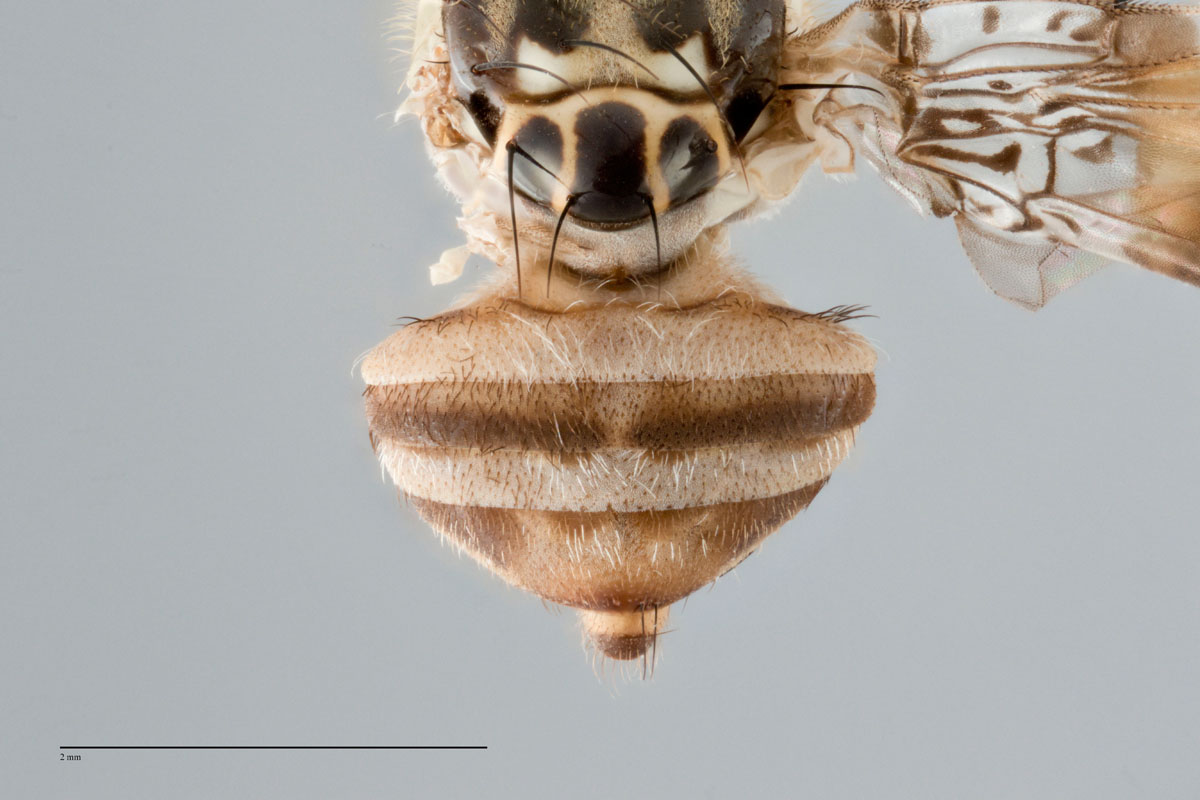 link
linkCeratitis rosa - Abdomen Dorsal Classic CRO001
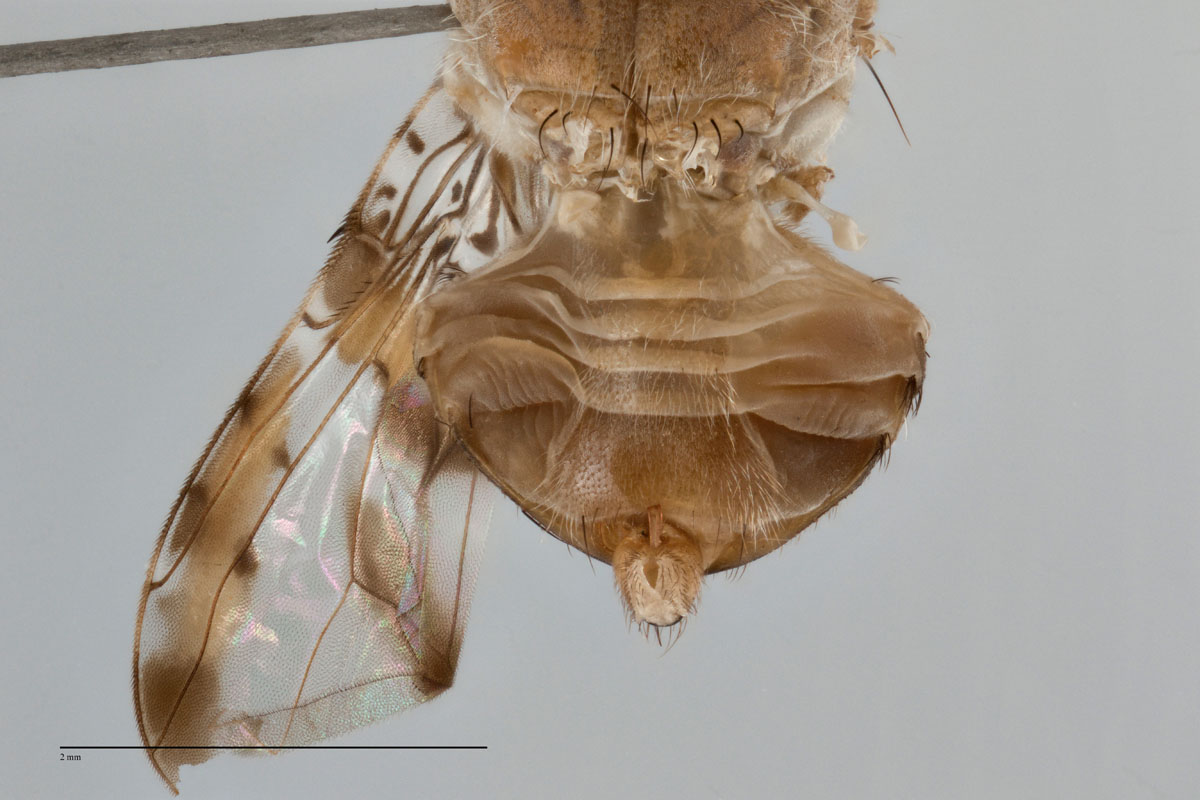 link
linkCeratitis rosa - Abdomen Ventral Classic CRO001
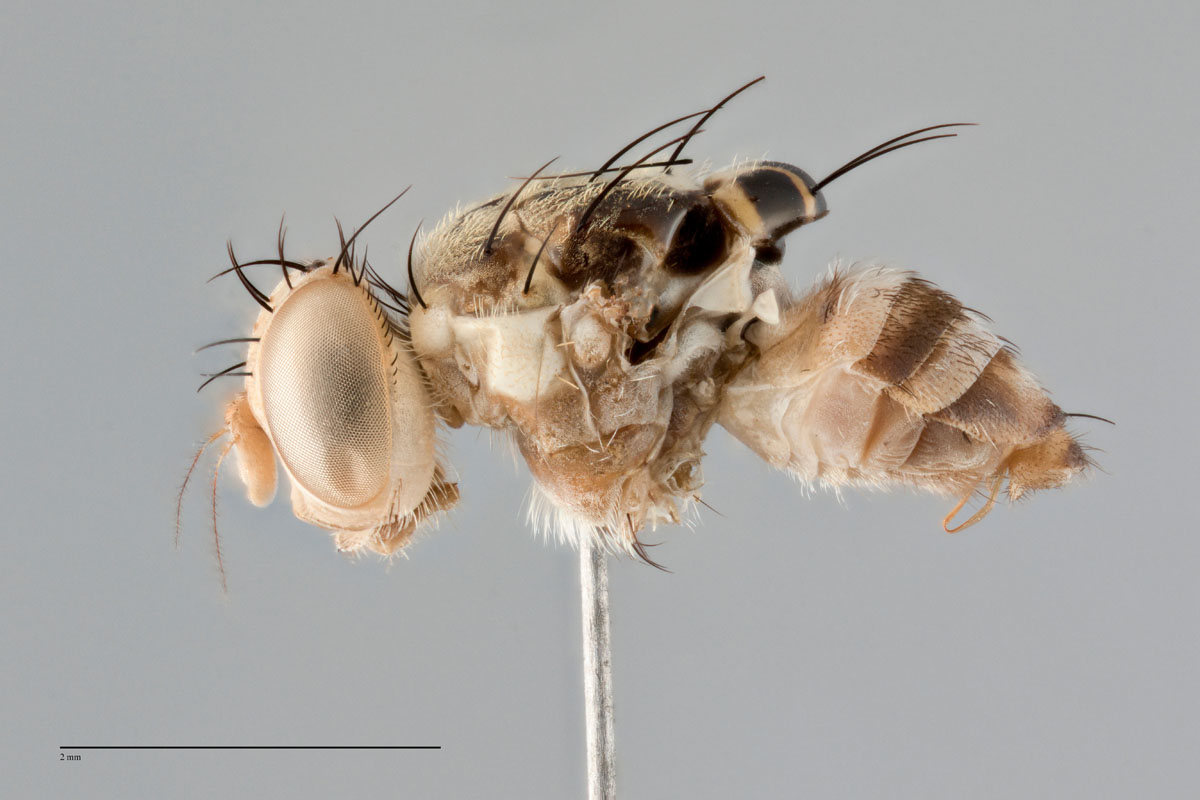 link
linkCeratitis rosa - Entire Body Lateral CRO001
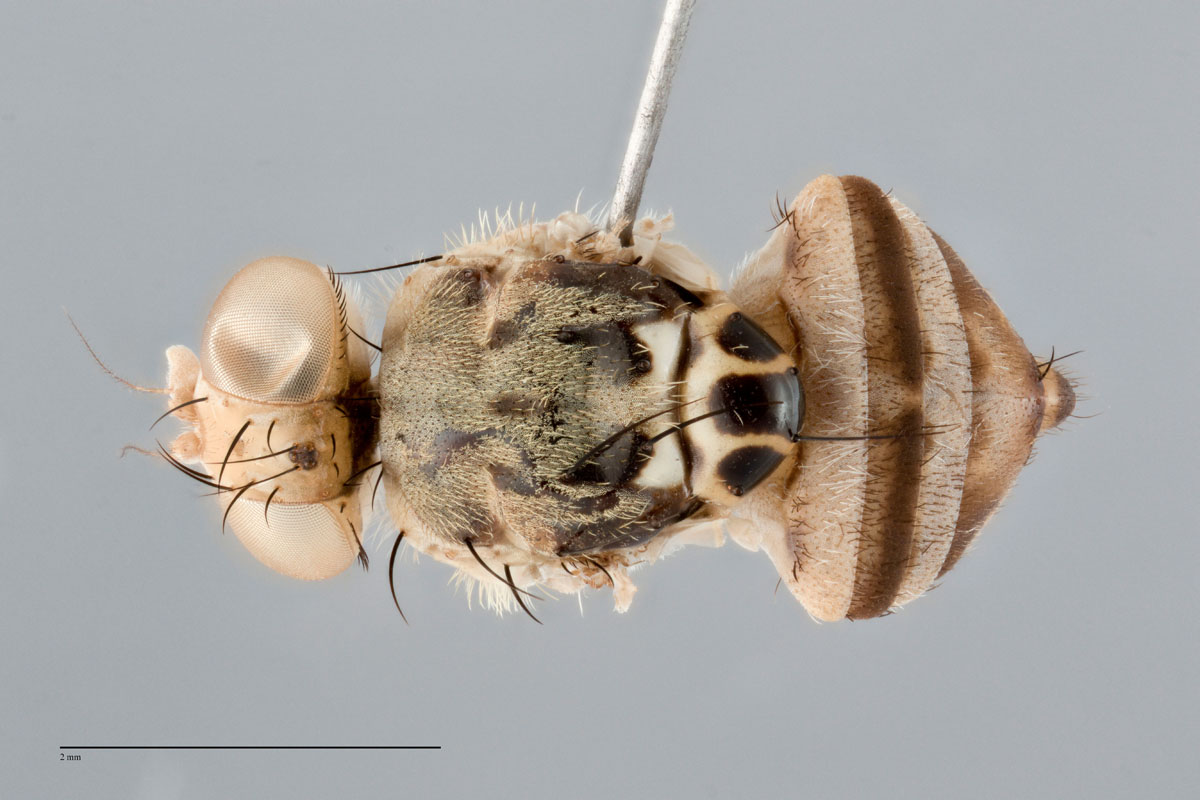 link
linkCeratitis rosa - Entire Fly Dorsal Classic CRO001
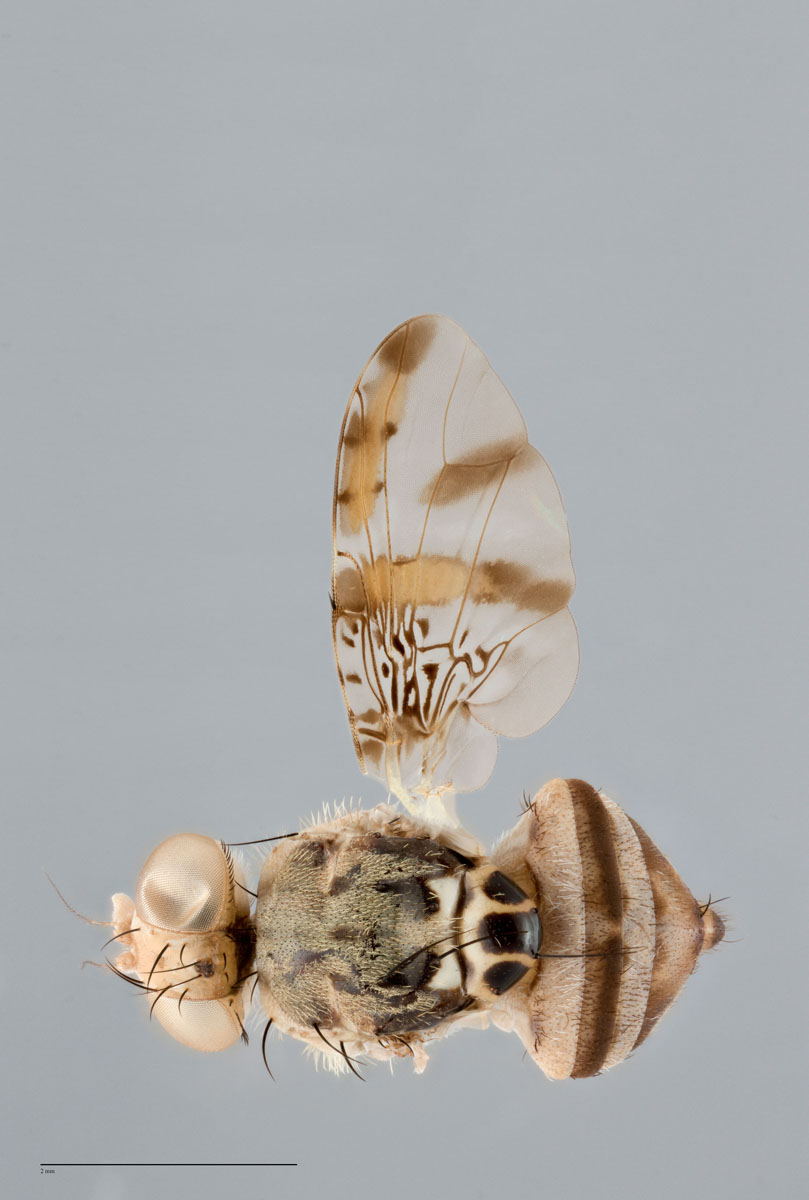 link
linkCeratitis rosa - Entire Fly Dorsal with Wing CRO001
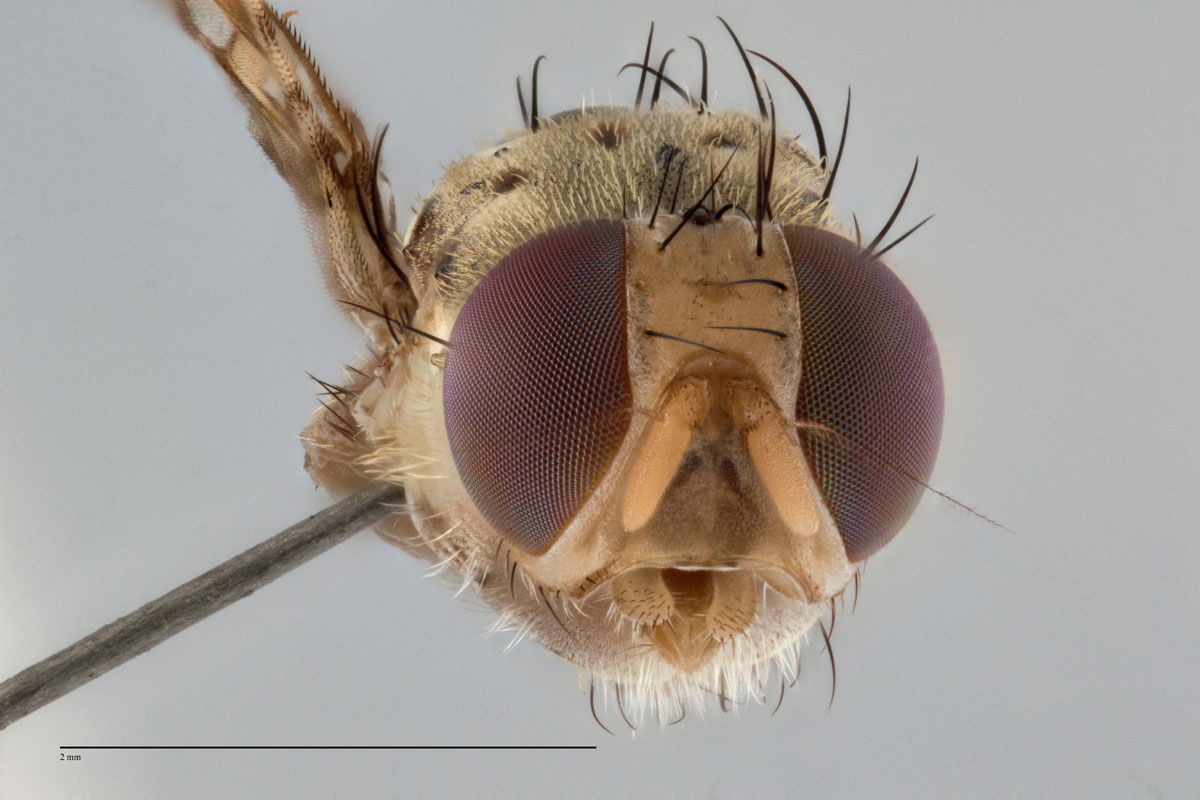 link
linkCeratitis rosa - Head Classic CRO001
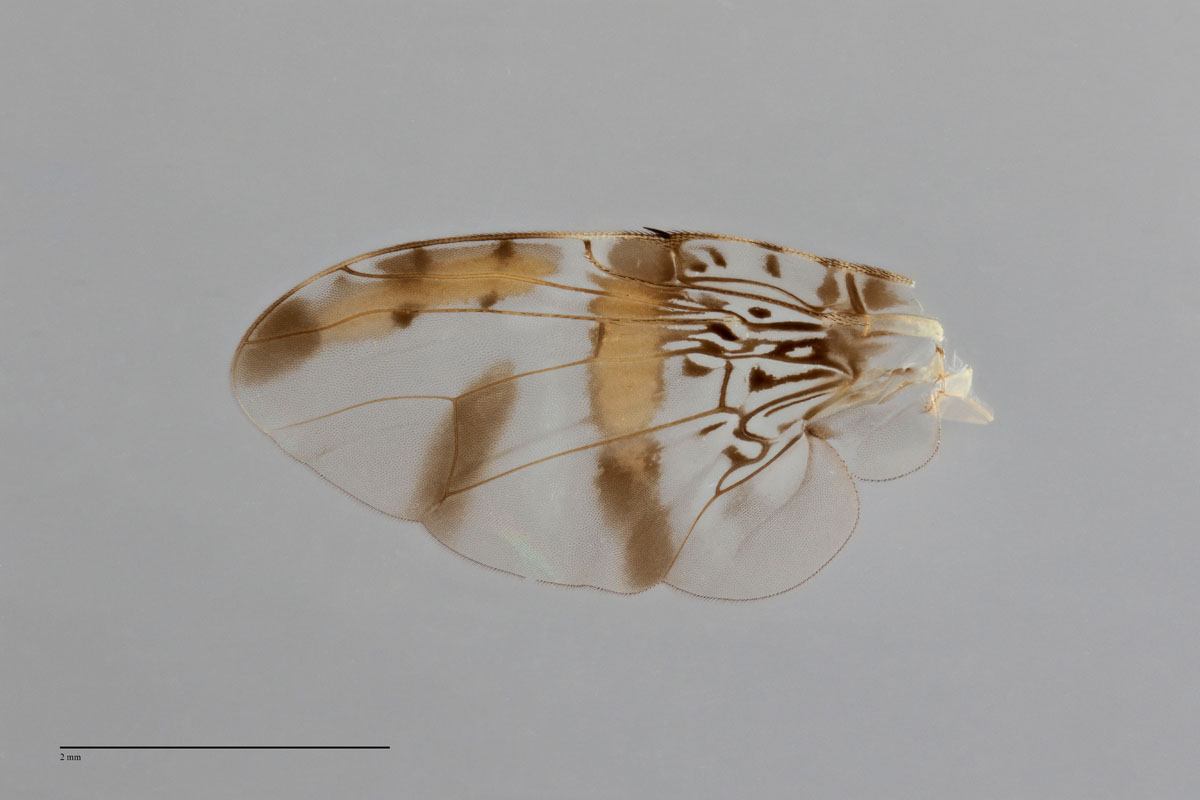 link
linkCeratitis rosa - Left Wing Classic CRO001
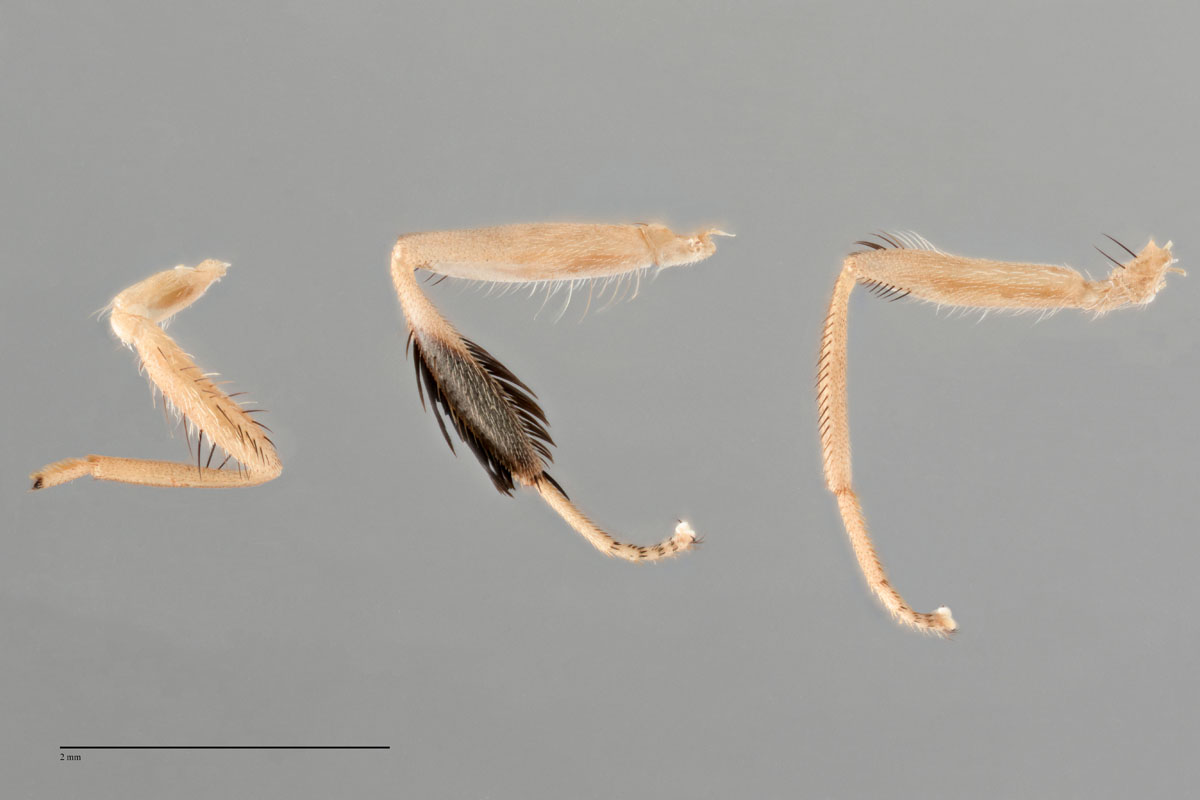 link
linkCeratitis rosa - Legs Classic CRO001
Host Range
Ceratitis rosa has been recorded on hosts from a wide range of families. These include:
- Anacardiaceae
- Annonaceae
- Apocynaceae
- Caricaceae
- Clusiaceae
- Combretaceae
- Lauraceae
- Malvaceae
- Moraceae
- Myrtaceae
- Oxalidaceae
- Rhamnaceae
- Rosaceae
- Rubiaceae
- Rutaceae
- Sapindaceae
- Sapotaceae
- Solanaceae
- Vitaceae
For a full list of recorded hosts see CABI 2007.
Major commercial hosts:
- Coffea arabica (coffee)
- Citrus species (citrus)
- Prunus persica (peach)
- Psidium species (guava)
Distribution
Kenya, Malawi, Mozambique, South Africa, Tanzania. See here for more details.
Due to the recent distinction of C. quilicii as a separate species from C. rosa, these distributions may require further resolution as more knowledge is gained of each species’ true geographic range.
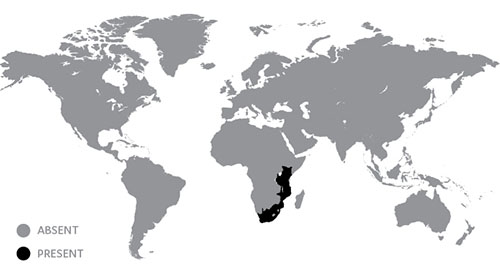
Similar species
Ceratitis rosa is best recognised by its characteristic pattern of brown wing bands, the three black areas in the apical half of the scutellum, and by the male having feathering on the mid tibiae, but no feathering on the mid femora (White and Elson-Harris 1992).
This fruit fly closely resembles the Mediterranean fruit fly in appearance. It averages slightly larger and has characteristic picture wings and dark black spots on the thorax. The arista of the antenna is plumose, while that of the C. capitata bears only short pubescence. The front of the male lacks the pair of conspicuous spatulate setae which is found on the male C. capitata. The mesothoracic tibiae of the males are clothed with dorsal and ventral brushes of elongated bluish-black scales, lacking in the C. capitata. The ovipositor sheath of the female is shorter than the width at its base. Length of the fly 4 to 5 mm (UF and FDACS 2009).
Ceratitis rosa also closely resembles C. quilicii, a recently described species. The males can be distinguished by minor differences of the mid-tibia, with C. rosa having a broader mid-tibia with black coloration reaching the ventral and dorsal margins of the tibia throughout, while C. quilicii has a more slender tibia, gradually tapering towards the base, and with the black coloration not reaching the ventral and dorsal margins throughout the full length.
Pest Status
- Exotic
- High priority pest identified in the Mango IBP
- Ceratitis rosa is highly polyphagous and causes damage to a very wide range of unrelated fruit crops
Attractant/Lure
Trimedlure and terpinyl acetate. Also attracted to EGO lure which appears to be more powerful than trimedlure
